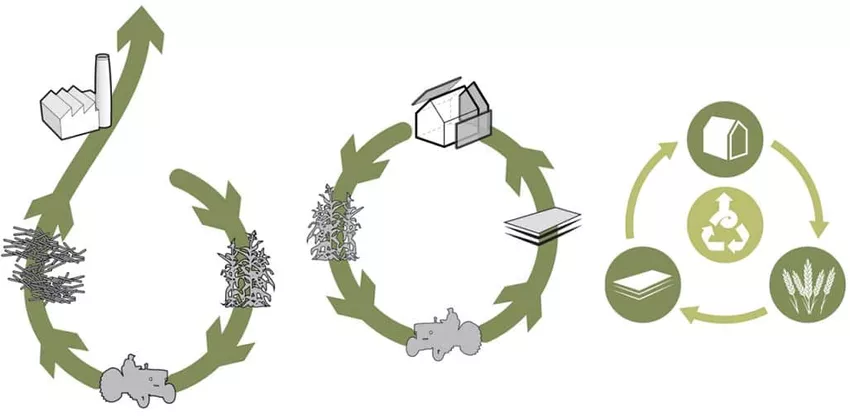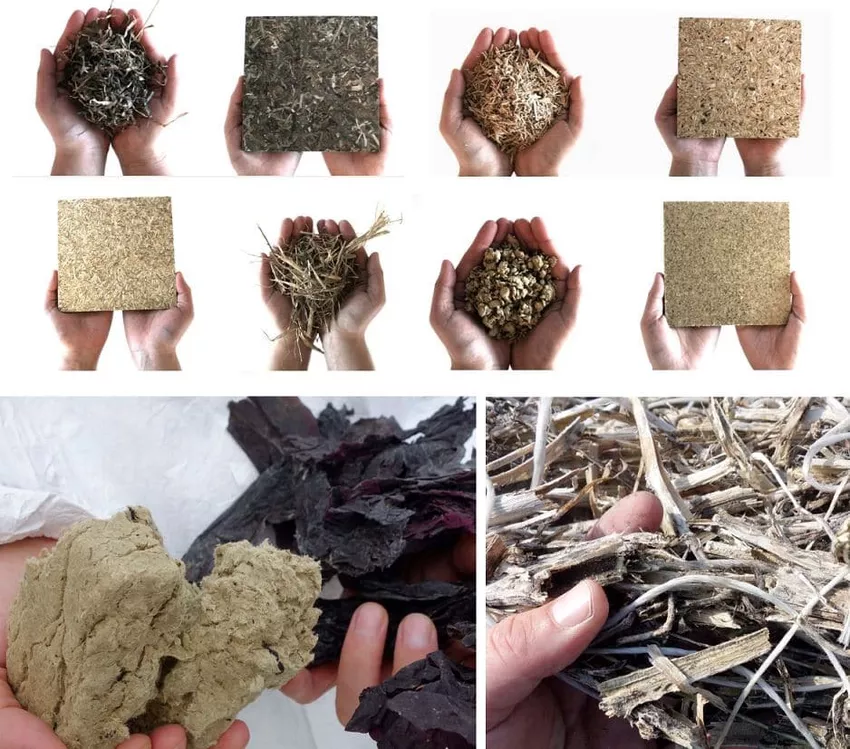
A very healthy biological house
Changing the type of material we use in traditional construction is not always easy and more so if we look for new materials that not only respect the environment, but also the health of the occupants or that at the same time - constructively speaking - have those properties suitable for use them in construction sites. The biological houses They are not new, but they do solve the equation to the question… How can we recycle the leftover materials from the agricultural industry as building components? And that the result is more than satisfactory.
What is a biological house?
Is that housing that is built on and typically made up of the remains of agricultural products such as straw or grass. Instead of being burned for energy, these materials are transformed into natural building materials, in short,biological materials for construction.
This not only provides most of the raw materials needed in the construction of biological houses, it also prevents the waste product from being burned.

The term should not be confused with ecological houses, where they are not always "healthy" (See more information about the concept of healthy homes). That is, we can practice a construction where the materials used - for example - are concrete, but we take advantage of the sun's energy with solar panels to produce energy, here we would say that it is an ecological house, but the materials used in its structure are not natural , nor are they recycled.
In the same way build a biological house with natural materials is not synonymous with sustainability. If we build a house of natural stone, it is possible that its extraction may not be sustainable or renewable, since we use a resource that cannot be regenerated.

The example of biological dwelling It is designed with a circular economy in mind and is developed with a set of principles that ensure the separability of the building and the possibility of preserving materials, elements and components in a closed loop over time. In this way, the valuable raw materials that are used for the construction of the building do not end up as waste, but can be introduced into new closed circuits.
The bio house
The architectural firm Een til Een has crossed the limits of the green building by using materials that would normally be considered waste. Offering a new, efficient and affordable way to build homes in the future.

As part of BIOTOPE, an exhibition park and resource center designed to showcase the latest in sustainable building technologies in Middelfart, Denmark. The architects studio has converted agricultural residues into construction materials (grass, tomato stems, seaweed or straw).

For the processing and development of construction materials in this new biological architecture, the project uses recycling and new digital production technologies. On this basis, the biological project will stimulate a new market for green growth through waste refinement. Also, demonstrate how to build healthy and ecological homes in the future that cost a competitive price.
The sophisticated cladding of the house was also chosen for its strong ecological profile. Kebony modifies sustainably sourced softwoods by heating the wood with a biological liquid, essentially polymerizing the cell wall of the wood.
This innovative process, developed in Norway, coats softwood parts into durable hardwood panels, perfect for construction.


The biological home It is based on a flexible and modular construction system. The house is designed to ensure rapid construction and disassembly. Simplified production and modular design make future construction retrofit and change less complicated and less expensive.

We recall that we have an extensive and interesting article on prefabricated and modular ecological houses where we describe the advantages, disadvantages or most interesting characteristics of this construction typology.

Thebiological dwelling It can be moved from the site at any point without damaging its surroundings, since the foundation is on steel piles rather than a traditional concrete foundation (We can learn more in the extensive article on types of foundations).
All this saves the intensive use of carbon in the construction of foundations and also allows its recyclability, since the house can be disassembled and rebuilt in another place, either in its original form or designed as another property entirely.
The novel project is supported by the Danish Ministry of the Environment and is undoubtedly a revelation for the construction industry. With all the materials already commercially available, there is no reason why these sustainable technologies cannot be incorporated into future residential projects on a massive scale.
We can also see the article on how to build a sustainable and ecological house or the article on house plans where we find 28 examples of sustainable homes where we can also access them.
If you liked this article, share it!


